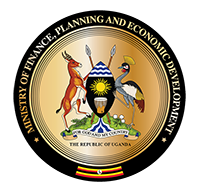Macroeconomics, Growth and Economic Research
The Bank of Uganda (BoU) is the Central Bank of the Republic of Uganda. It is owned by the Government of Uganda but not a government department. BoU is responsible for the formulation and implementation of monetary policy as well as regulating & supervising financial institutions, and conducts all its activities in close association with MoFPED. BoU also has a cadre of regular (bi-monthly, quarterly and annual) reports analysing the state of the economy from a monetary and financial angle. In addition, the BoU working paper series provides relevant research conducted by BoU staff. BoU provides an extended set of macroeconomic statistics, which are also available in tidy format through the Macro Data Portal and API.
The Uganda Bureau of Statistics (UBOS) is the principal data collecting, processing, analysing and disseminating agency responsible for coordinating and supervising the National Statistical System. It provides a small number of macroeconomic statistics, most importantly Annual and Quarterly GDP estimates. Furthermore it provides Population and Census statistics, statistics for various socioeconomic sectors, and several data portals among which the geospatial portal notably provides maps and spatial statistics. Tidy GDP data and the full 2014 Census are also available through the Macro Data Portal and API. The full census is visualized in the Census-Mapper.
The Economic Policy Research Centre (EPRC) is Uganda’s leading think tank in economics and development policy oriented research and policy analysis. The six research themes are: (i) economy, employment and public finance management; (ii) microeconomic analysis and service delivery; (iii) private sector development and competitiveness; (iv) natural resource management; (v) policy inconsistency and implementation gaps; and (vi) trade and regional integration.
The International Growth Centre (IGC) Uganda delivers research and policy advice based on demand from the Government of Uganda. It informs policy in a range of areas related to inclusive growth, including taxation, education, trade, productivity, urban development and energy provision.
The Centre for Development Alternatives (CDA) is a think-and-do-tank based in Kampala, Uganda. It provides some notable reports about industrial policy and SME taxation, and a starting economic policy paper series.
Budget, Resources and Development Policy
Budget.go.ug is committed to giving Ugandan citizens access to timely and accurate budget information, and real opportunities to participate in government budget processes. You can learn about the Budget process on the Budget Basics pages. You can access and download budget and expenditure data through the Budget Dashboard. You can access published government documents through the Budget Library.
The Resource Enhancement and Accountability Programme (REAP) is the Government of Uganda's response mechanism for implementation and coordination of Public Financial Management (PFM) reforms agenda in the period June 2019 up to June 2023. It focuses on strengthening accountability policies, processes and systems for effective and efficient usage of public resources as a foundation for the delivery of services. The website proides up to date information about past and present PFM reforms and supporting documents.
This Portal is a product of MoFPED in fulfilling part of its mandate to communicate economic development policy and its results. It provides timely and relevant information on Uganda’s development with a view to facilitating increased engagement with stakeholders on Uganda’s development policy. Towards this end the portal provides various reports by national and international authorities in different areas of development policy, amongst other information.
The Uganda Trade Information Portal is a one stop center for information required for Import, Export and Transit of goods. It also has trade statistics of Uganda from the UNCTAD database.
The Portal (ugandatrades.go.ug) is a trade facilitation platform providing access to fully transparent practical step-by-step guides to the licenses, pre-clearance permits and clearance formalities for the most traded goods in and out of Uganda.
International Trade and Global Value Chains
The CEPII is the leading French center for research and expertise on the world economy. It provides a collection of outstanding, widely used, and easily accesible datasets on global trade, tariffs and the spatial economy.
Open Trade Statistics is an independent project that values reproducible research and provides tidy trade data. It provides accessible API's for R and Python to detailed pre-processed product level (HS6) trade data from the UN Comtrade database. Country and product level trade with Uganda is also available in the Macro Data Portal.
The GTAP Database is a global database which contains complete bilateral trade, input-output, transport and protection linkages among 121 countries for 65 sectors. The full GTAP database must be purchased, but there are a large number of free datasets (including summaries of GTAP, GTAP Africa Database, Social Accounting Matrix [SAM] extraction, the Global [bilateral] FDI Dataset, Project on Bilateral Labor Migration, CO2 emissions).
The World Integrated Trade Solution (WITS) allows users to access and retrieve information on trade and tariffs from various international databases.
The Eora global supply chain database consists of a multi-region input-output table (MRIO) model that provides a time series of high-resolution IO tables with matching environmental and social satellite accounts for 190 countries. Eora is free for academic use at degree-granting academic institutions.
Spot export opportunities for trade development;
The Export Potential Map is a free tool that turns economic analysis into practical trade information using the ITC export potential methodology. The Export Potential Map identifies products, markets and suppliers with (untapped) export potential as well as opportunities for export diversification. It evaluates export performance, the target market's demand and market access conditions as well as bilateral links between the exporting country and target market to provide a unique ranking of untapped opportunities.
Using the Map’s customizable and shareable visualizations, you can spot:
1. products, markets and suppliers with (untapped) export potential
2. opportunities for export diversification
International Organizations
 MEPD
MEPD